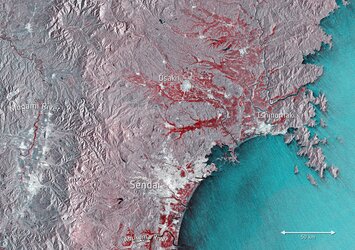Accept all cookies Accept only essential cookies See our Cookie Notice

About ESA
The European Space Agency (ESA) is Europe’s gateway to space. Its mission is to shape the development of Europe’s space capability and ensure that investment in space continues to deliver benefits to the citizens of Europe and the world.
Highlights
ESA - United space in Europe
This is ESA ESA facts Member States & Cooperating States Funding Director General Top management For Member State Delegations European vision European Space Policy ESA & EU Space Councils Responsibility & Sustainability Annual Report Calendar of meetings Corporate newsEstablishments & sites
ESA Headquarters ESA ESTEC ESA ESOC ESA ESRIN ESA EAC ESA ESAC Europe's Spaceport ESA ESEC ESA ECSAT Brussels Office Washington OfficeWorking with ESA
Business with ESA ESA Commercialisation Gateway Law at ESA Careers Cyber resilience at ESA IT at ESA Newsroom Partnerships Merchandising Licence Education Open Space Innovation Platform Integrity and Reporting Administrative Tribunal Health and SafetyMore about ESA
History ESA Historical Archives Exhibitions Publications Art & Culture ESA Merchandise Kids Diversity ESA Brand Centre ESA ChampionsLatest
Space in Member States
Find out more about space activities in our 23 Member States, and understand how ESA works together with their national agencies, institutions and organisations.
Science & Exploration
Exploring our Solar System and unlocking the secrets of the Universe
Go to topicAstronauts
Missions
Juice Euclid Webb Solar Orbiter BepiColombo Gaia ExoMars Cheops Exoplanet missions More missionsActivities
International Space Station Orion service module Gateway Concordia Caves & Pangaea BenefitsLatest
Space Safety
Protecting life and infrastructure on Earth and in orbit
Go to topicAsteroids
Asteroids and Planetary Defence Asteroid danger explained Flyeye telescope: asteroid detection Hera mission: asteroid deflection Near-Earth Object Coordination CentreSpace junk
About space debris Space debris by the numbers Space Environment Report In space refuelling, refurbishing and removingSafety from space
Clean Space ecodesign Zero Debris Technologies Space for Earth Supporting Sustainable DevelopmentApplications
Using space to benefit citizens and meet future challenges on Earth
Go to topicObserving the Earth
Observing the Earth Future EO Copernicus Meteorology Space for our climate Satellite missionsCommercialisation
ESA Commercialisation Gateway Open Space Innovation Platform Business Incubation ESA Space SolutionsLatest
Enabling & Support
Making space accessible and developing the technologies for the future
Go to topicBuilding missions
Space Engineering and Technology Test centre Laboratories Concurrent Design Facility Preparing for the future Shaping the Future Discovery and Preparation Advanced Concepts TeamSpace transportation
Space Transportation Ariane Vega Space Rider Future space transportation Boost! Europe's Spaceport Launches from Europe's Spaceport from 2012Latest
Earth from Space: Autumn in Japan
Thank you for liking
You have already liked this page, you can only like it once!
This image, from the Copernicus Sentinel-3 mission on 1 November 2023, captures the colours of autumn over the Japanese archipelago.
Zoom in to explore this image at its full resolution or click on the circles to learn more.
Japan is made up of thousands of islands stretching some 2500 km through the western Pacific Ocean. Almost all of the land area, however, is taken up by the country’s four main islands, three of which are pictured in this image. From north to south we see Honshu, the largest island extending in a northeast–southwest arc, Shikoku, just beneath the lower part of Honshu, and Kyushu at the bottom.
The image also shows how Japan is mainly mountainous and about 68% of the land area is covered by forest. Cooler temperatures and fewer daylight hours triggered the autumn foliage, which shows up here in shades of brown and red, particularly in forests in the upper part of the image. The colours depend on the various tree species, local weather, altitude and orientation of the slopes.
Urban areas and cultivated land stand out in sharp contrast in tones of grey. The largest area on the eastern coast of Honshu is Japan’s capital Tokyo. This metropolitan area – commonly known as Greater Tokyo – stretches around Tokyo Bay and is home to about 37 million people, making it the largest megacity in the world. Other urban areas, visible moving south along the Pacific coast of Honshu, are Nagoya and Osaka.
Honshu is also home to the country’s highest mountain Mount Fuji, a volcano that has been dormant since 1707. Its snow-capped summit can be spotted as a small white dot near the Pacific coast, about 100 km southwest of Tokyo.
Another volcano, visible with a plume of smoke pouring from its summit, is Sakurajima on the southern island of Kyushu. Formerly an island-volcano in the middle of Kagoshima Bay, it is now a peninsula after a powerful eruption in 1914 connected it with the Osumi Peninsula to the east.
Copernicus Sentinel-3 satellites carry four sensors working together, making it the most complex so far of all the Sentinel missions. The Ocean and Land Colour Instrument used to create this image offers new eyes on Earth, monitoring ocean ecosystems, supporting crop management and agriculture, and providing estimates of atmospheric aerosol and clouds.
-
CREDIT
contains modified Copernicus Sentinel data (2023), processed by ESA -
LICENCE
CC BY-SA 3.0 IGO or ESA Standard Licence
(content can be used under either licence)

Floods northeast of Tokyo captured by the Copernicus…

Japanese archipelago

Earth from Space: Tokyo, Japan

Tokyo















 Germany
Germany
 Austria
Austria
 Belgium
Belgium
 Denmark
Denmark
 Spain
Spain
 Estonia
Estonia
 Finland
Finland
 France
France
 Greece
Greece
 Hungary
Hungary
 Ireland
Ireland
 Italy
Italy
 Luxembourg
Luxembourg
 Norway
Norway
 The Netherlands
The Netherlands
 Poland
Poland
 Portugal
Portugal
 Czechia
Czechia
 Romania
Romania
 United Kingdom
United Kingdom
 Slovenia
Slovenia
 Sweden
Sweden
 Switzerland
Switzerland

























